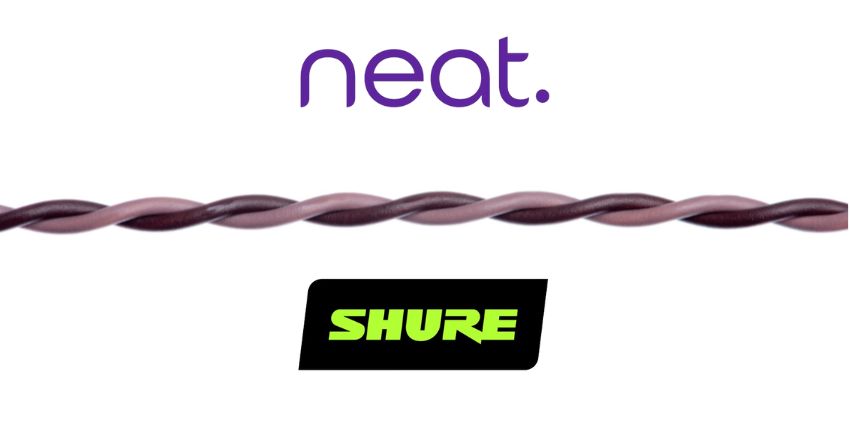The world of UC as we know it has changed drastically over the course of 2017. We’ve seen everything from new developments in virtual reality meeting rooms, to consolidation between some of the biggest brands in the world.
With so much change in the air, we’re left to wonder what 2018 will bring, and how we’ll move forward into the Unified Communications environment of the future.
According to analysts, the market should triple in size over the next five years or so, delivering an average value of $96 billion by the end of 2023. With predictions like that, it’s no wonder that countless enterprises and companies across the globe are beginning to explore new opportunities in the growing industry of UC.
I thought it was about time I gave my predictions on some of the buzzwords we’re likely to encounter in the year ahead.
Is Collaboration the Key to CIO Success?
The first thing worth noting about Unified Communications in 2017, is that it officially moved beyond audio and into a world where almost anything is possible. Today, more businesses than ever before are offering remote working and telecommuting options to their employees, to attract new millennial talent, and expand their brand reach.
However, for those new business models to work, companies need a collaboration strategy that encompasses everything from standard voice, to video, messaging, and real-time connectivity. This is something that only some organisations have gotten their head around up to now, with about 39% of businesses complaining that they still don’t “collaborate” enough.
In 2018, an effective collaboration strategy will be key to success for any CIO, which opens plenty of doors for UC vendors. In fact, in one study of 1400 executives, 86% felt that lack of collaboration was the reason for most workplace failures. As solutions like Microsoft Teams, Slack, Glip and Circuit continue to lead the way for innovation, it’s up to other vendors to catch up or fall behind on the trends.
UCaaS, CCaaS, CPaaS and more…
Getting a handle on communication in 2018 is likely to be an activity that revolves around some iteration of cloud technology. While it’s possible that many companies will keep some of their tech on-premise, and opt for a hybrid model, there’s a good chance that many organisations will need to start considering the following options:
- UCaaS: Cloud UC is currently the default set-up of choice for small to mid-size businesses. Many mid-market organisations and enterprises might prefer a hybrid solution before they make the move fully to the cloud, but it’s clear to see that no matter where you are, or what you do, cloud technology is the future.
- CCaaS: Contact centres are becoming more crucial than ever in this era of customer experience. If you don’t have the right CCaaS strategy, you might struggle to stay ahead of the competition when it comes to serving your audience quickly, and effectively. Unfortunately, not all vendors in the UC world have a multi-tenanted cloud contact centre solution available. I expect to see vendors like Unify, Mitel, and Avaya addressing the issue in their portfolio soon.
- CPaaS: To establish the “ultimate” UC solution, many organisations have turned to make-your-own communication strategies with the help of CPaaS and web based APIs. I believe that the rise of this trend will continue in 2018, with new entrants making their mark in the sector. Twilio continues to be the market leader at this point, delivering next-level innovation that sets them apart from anyone else in the industry.
Could Consolidation Change the UC World?
One of the things we can see when we look at the range of UC options in the marketplace today is the fact that many vendors are now struggling to offer a complete end-to-end solution for their customers. Unless you have a basically unlimited budget, it’s hard to make sure that you can be everything, to everyone in the UC space.
This might be why we’ve started to see so much consolidation in 2017, with the Cisco/ BroadSoft deal emerging as perhaps the most well-known collaboration of the year. Mitel also managed to persuade ShoreTel to sell, and as we enter 2018, there’s a good chance we’ll see plenty of similar market-changing purchases on the horizon.
I expect to see an IPO from Fuze sometime soon, and part of me is left to wonder whether we’ll see continued growth in companies like 8×8 and RingCentral, or whether there’s a chance that a sale could be on the cards when billion-dollar offers arrive in the post.
Out with the Old, In with the New?
For many vendors in the UC space, the year of 2017 has been a time of change, evolution, and growth. For instance, at the beginning of January 2017, Avaya was entering chapter 11 bankruptcy, searching for a way to reorganise and strengthen their portfolio. By the time December arrived, the company had already established a plan that allowed them to exit chapter 11 as a public company, ready for new developments in 2018.
In 2018, I expect we’ll continue to see plenty of changes. Vendor churn may continue to become more significant as customers and channel partners grow more aware of the move that industries are making away from legacy and on-premise solutions. We’ve even started to see the emergence of a new type of reseller, as the UC world brings on fewer tech gurus and salespeople, and more customer service agents and digital marketers.
Additionally, we might see some withdrawal on the market too. The more we move into the future with things like cloud, IoT, AI, and so on, the more legacy brands will continue to struggle. Brands like Samsung and Panasonic are falling into obscurity with no UCaaS offering – and no signs of any cloud based services on the horizon.
Simplicity Continues to Be the Secret to Success
Though it’s hard to accurately predict the future, one thing does seem certain in 2018 – customers and partners will continue to search for simplicity from their vendors in an age of increasing complexity.
Today’s end-users want all the latest and greatest features in their UC strategy, but they don’t want to know about the work that’s happening behind the scenes. Single Pane UX solutions are likely to become more commonplace in 2018 as vendors recognise their customer’s need for a straightforward, and streamlined solution. WebRTC will also be a must, as new, modern companies grow tired of the old-fashioned option of installing new UC software. Counter-intuitive interfaces simply won’t survive in a marketplace built on a desire for instant gratification, constant scalability, and organisational agility.
No-one wants to have to move between various programs just to keep their communications plan running efficiently. Today’s consumers demand a UC system that’s quick, efficient, and connected.
Striving for Security
Of course, in this balance of complexity and simplicity, there must also be a strategy in place for reliable privacy and security measures too – particularly as GDPR is poised to cause quite the stir in 2018. Vendors will need to release formal statements that demonstrate they’re onboard with the latest regulations, and failure to communicate your position as a safety-first business could lose you the attention of your customers.
As we push further into 2018, there’s always a chance that new technologies could make managing UX and security concerns simpler. For instance, there are currently conversations happening around the power of the Blockchain, and its ability to add true compliance to the cloud environment. Already, companies like Avaya are experimenting with these options. We can only wait and see how they come to be integrated into the UC world of tomorrow.
Source: Rob’s Blog







